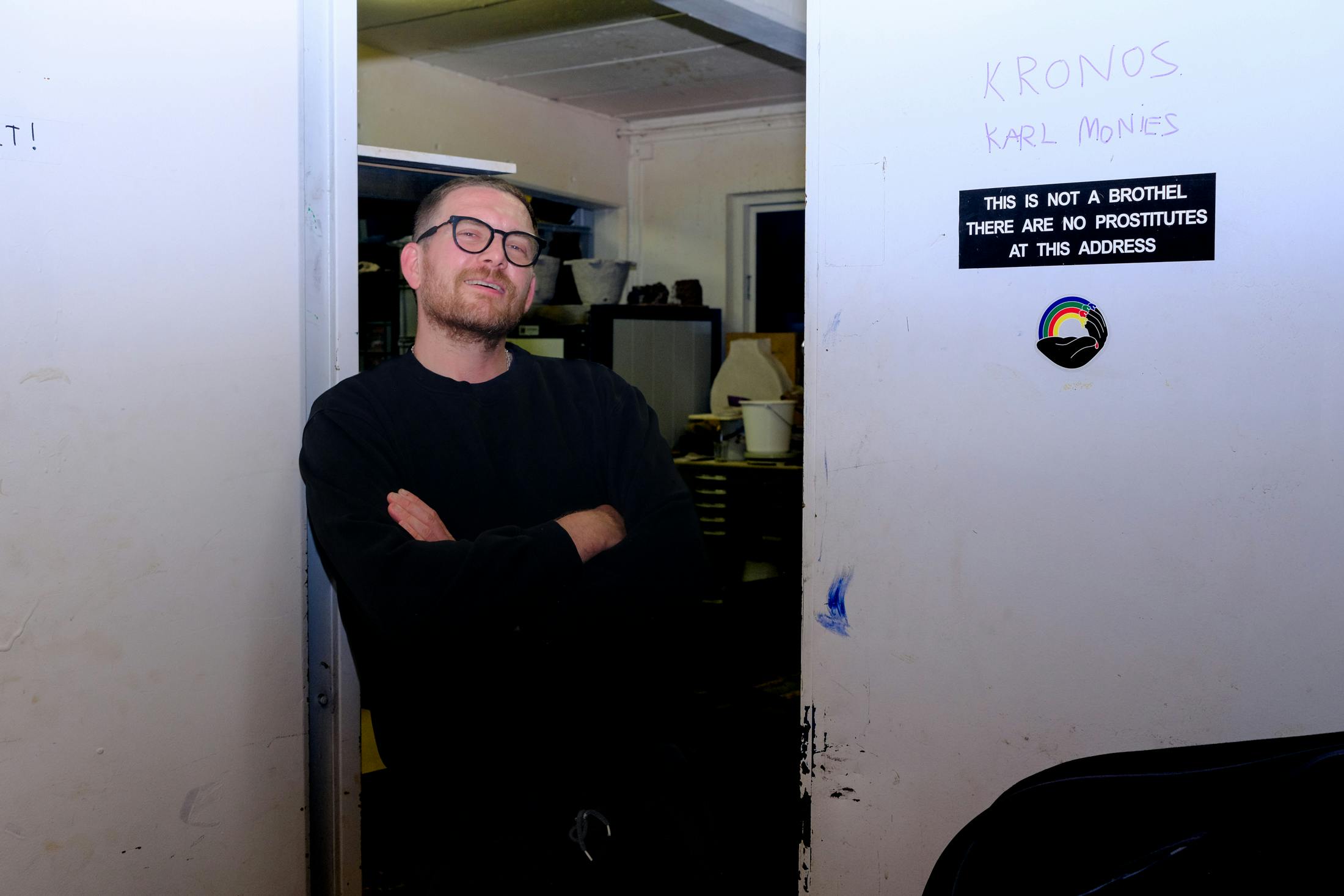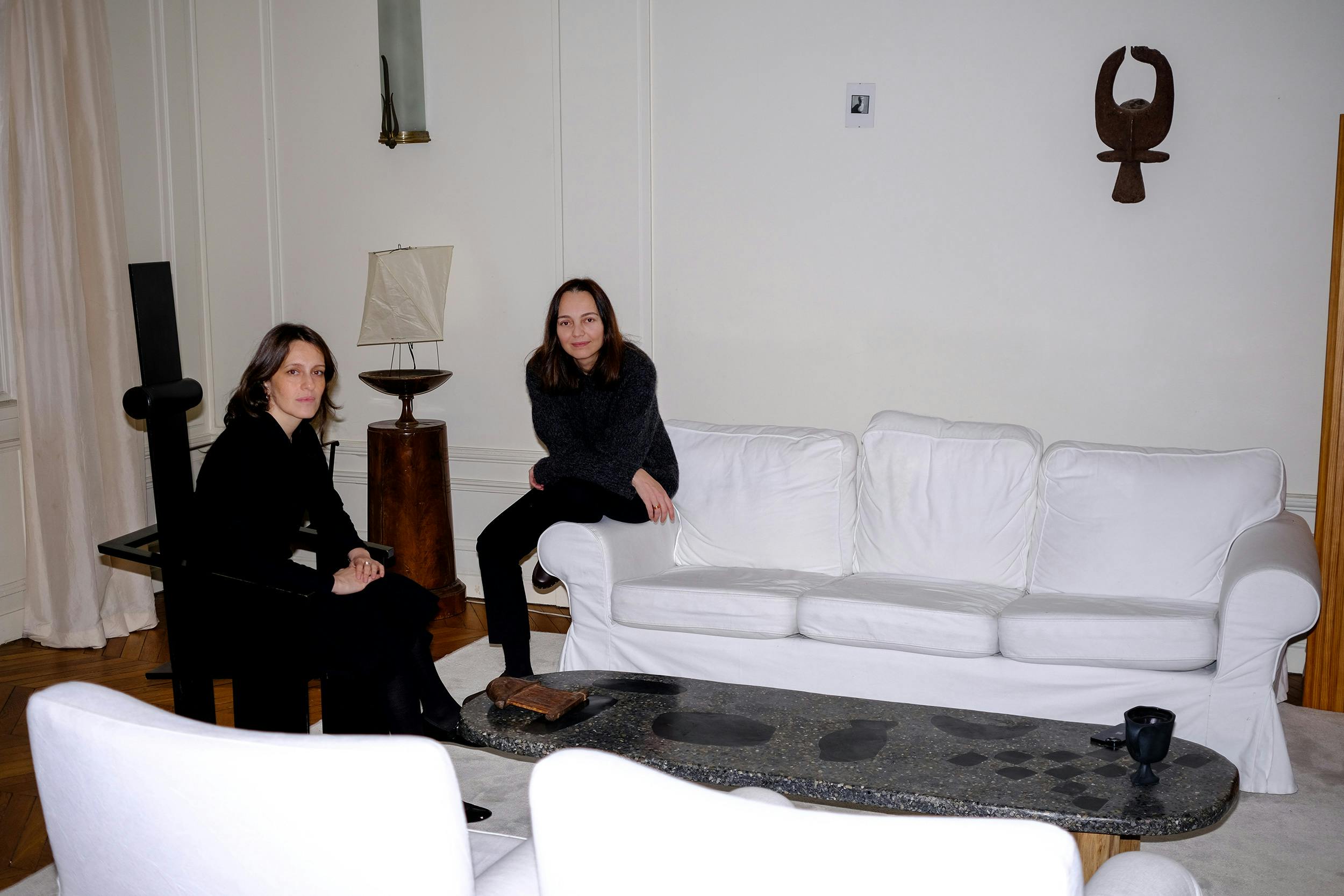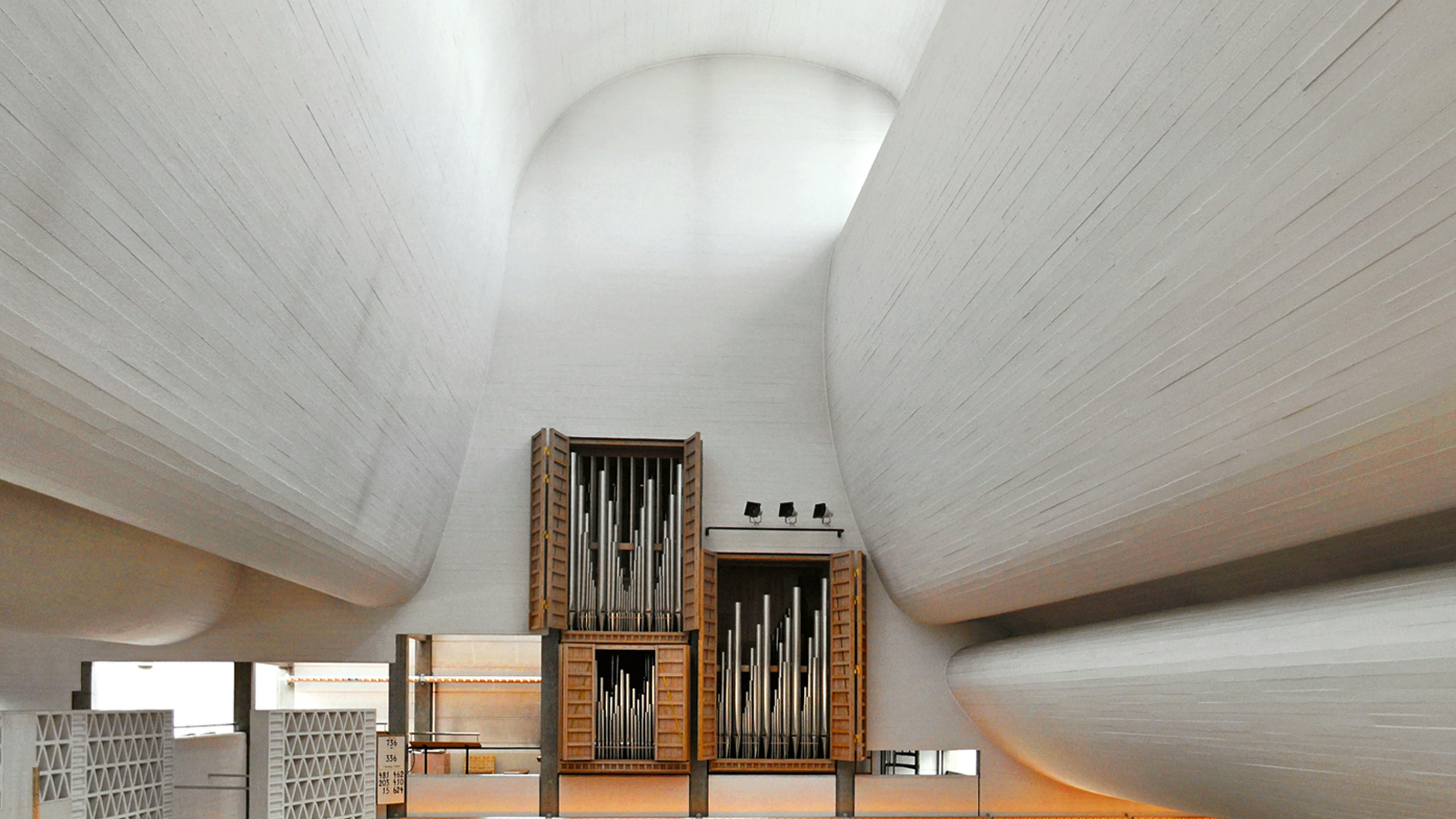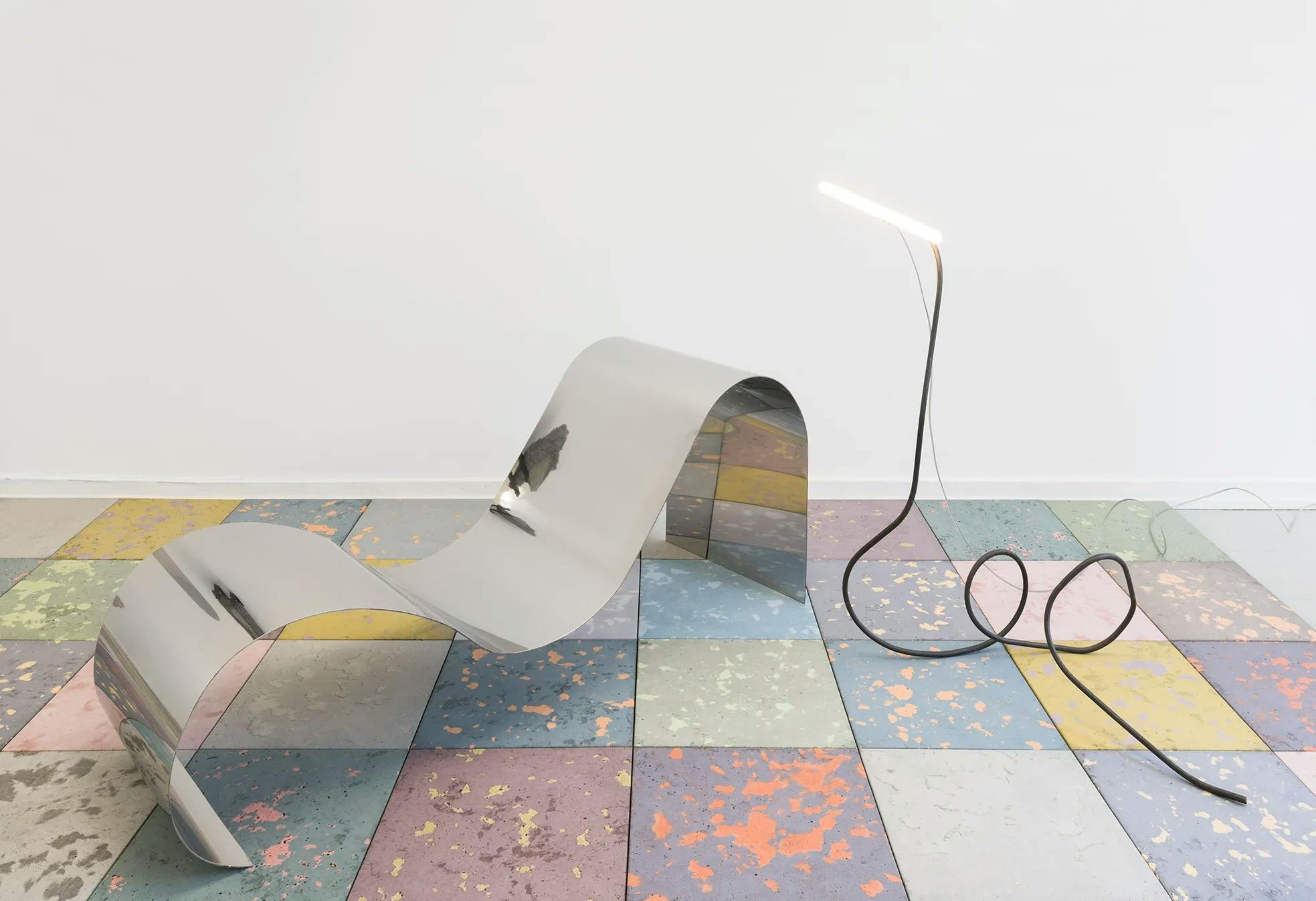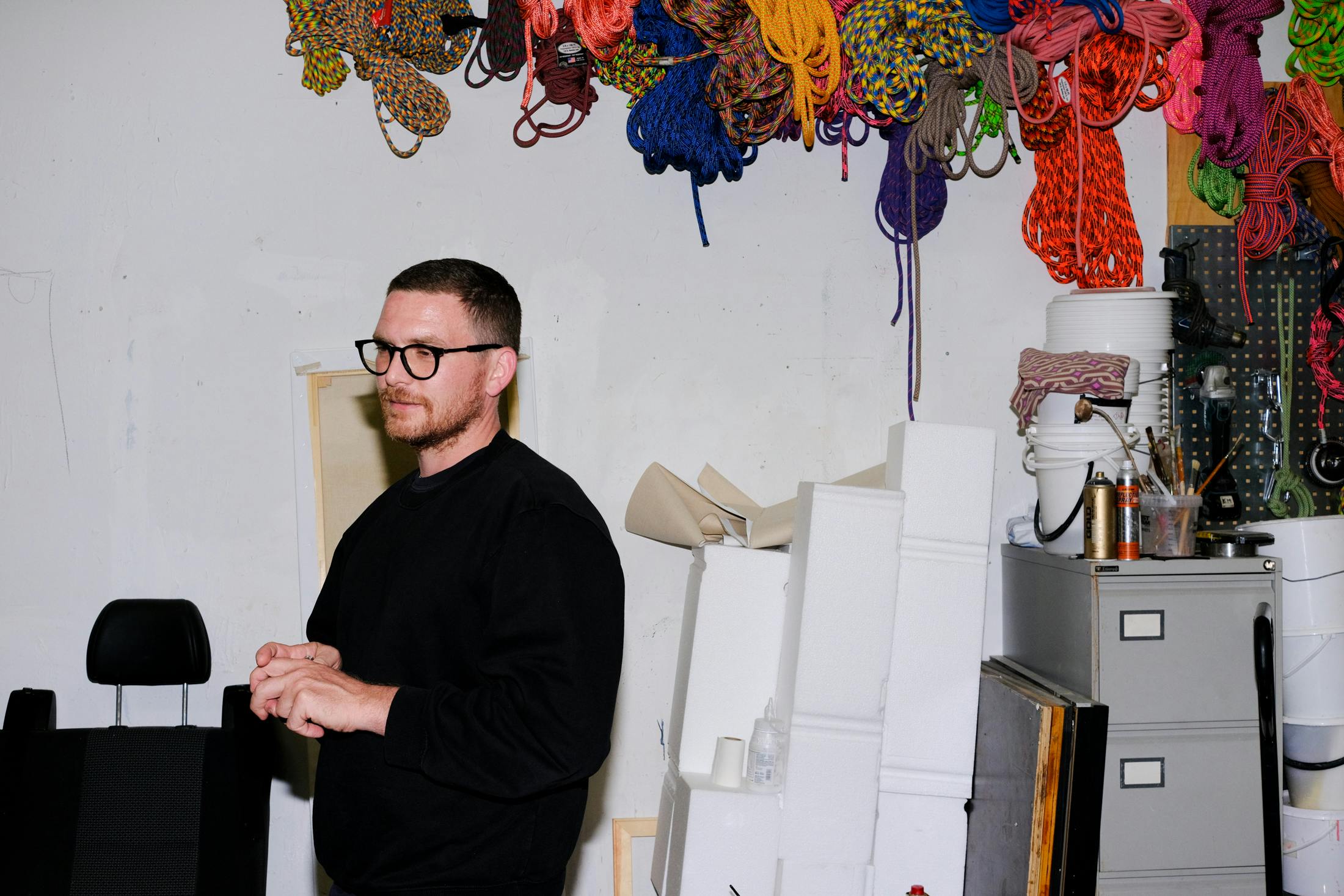
Studio Visit with Karl Monies
We visit the Copenhagen, Denmark, studio of Artist and Designer Karl Monies
As soon as we log on, we are inundated with images of beautiful things—people, art pieces, furniture, jewellery, clothing. So much of contemporary art today is made up of pieces created for social media. Of course, that has its place, and I’m not here to establish a hierarchy. However, sometimes, you meet some creatives, and you can feel there's so much more behind the work without reading any previous curatorial texts or artist statements. You want to know more.
One of the most magical things about Danish artist Karl Monies is his authenticity and depth, which permeate everything he does. I never refuse an invitation to have a night of discourse with Karl. I always walk away feeling like I’ve absorbed a dense philosophical book (in the best way possible), changed my position on a topic I was staunchly sure of and spent a post-hangout commute back to my hotel with an entirely new perspective on something.
Karl is a remarkably sensitive, perceptive, empathetic, and inquisitive man who not only has fascinating observations and philosophies of his own but is also a rare breed who genuinely seems to understand others' positions. He’s a man and an artist who examines and interrogates easily overlooked moments in everyday life and gives them platform and significance. This sensitivity and the discoveries it leads to are found in the brut materials and textures he gravitates towards, in the collaboration and conversation between artist and material. Much of Karl’s work relies on experimentation and reacting to what emerges during that process, his creative process mirroring his entire approach to life.
Over some bottles of wine and a pack of cigarettes, we discuss everything from working with Tal R and his approach to truly collaborating with the artists on his team to crit sessions in London, dabbling in new mediums that would inform his present-day practice in Berlin, the transformation and evolution of family businesses, and more.
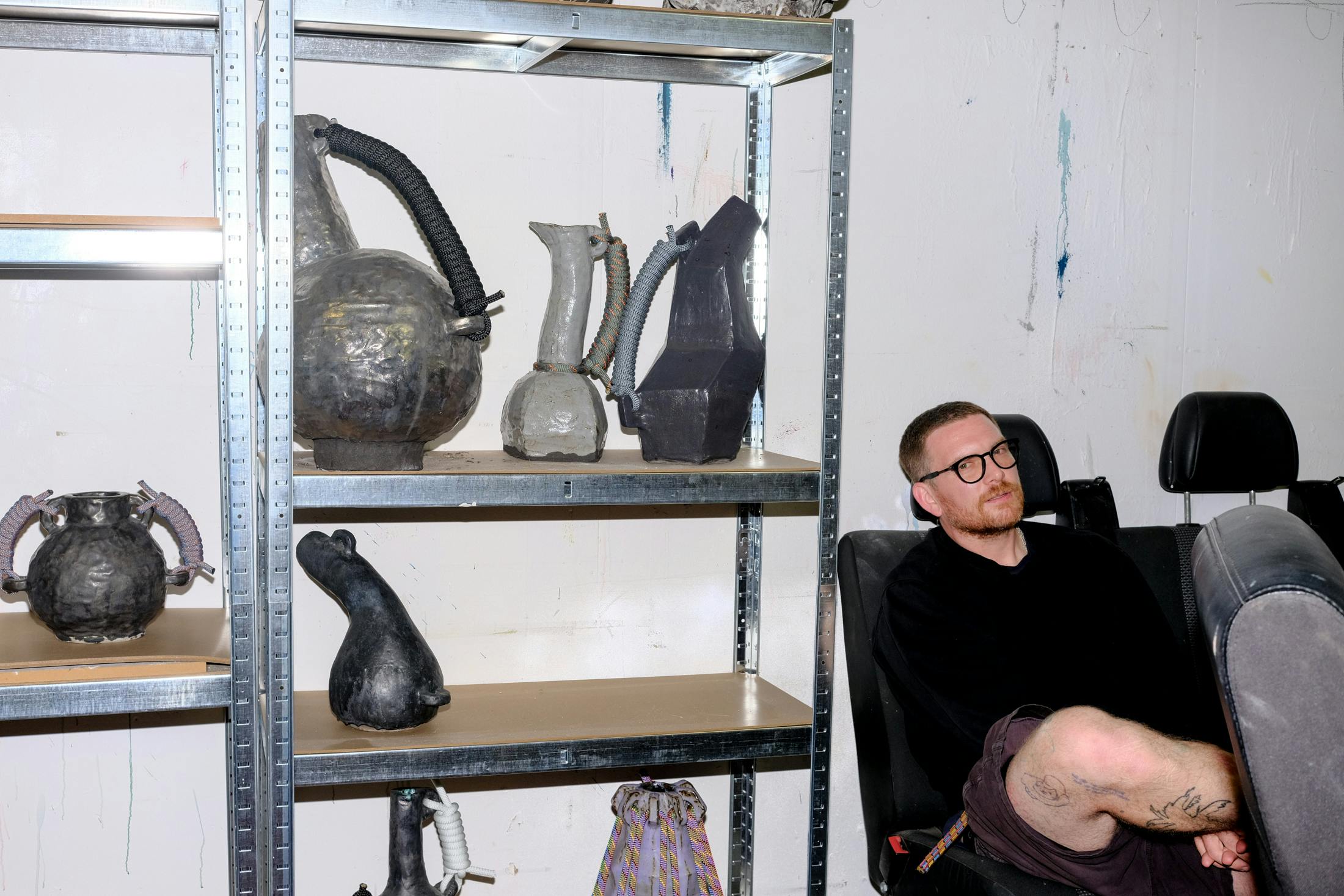
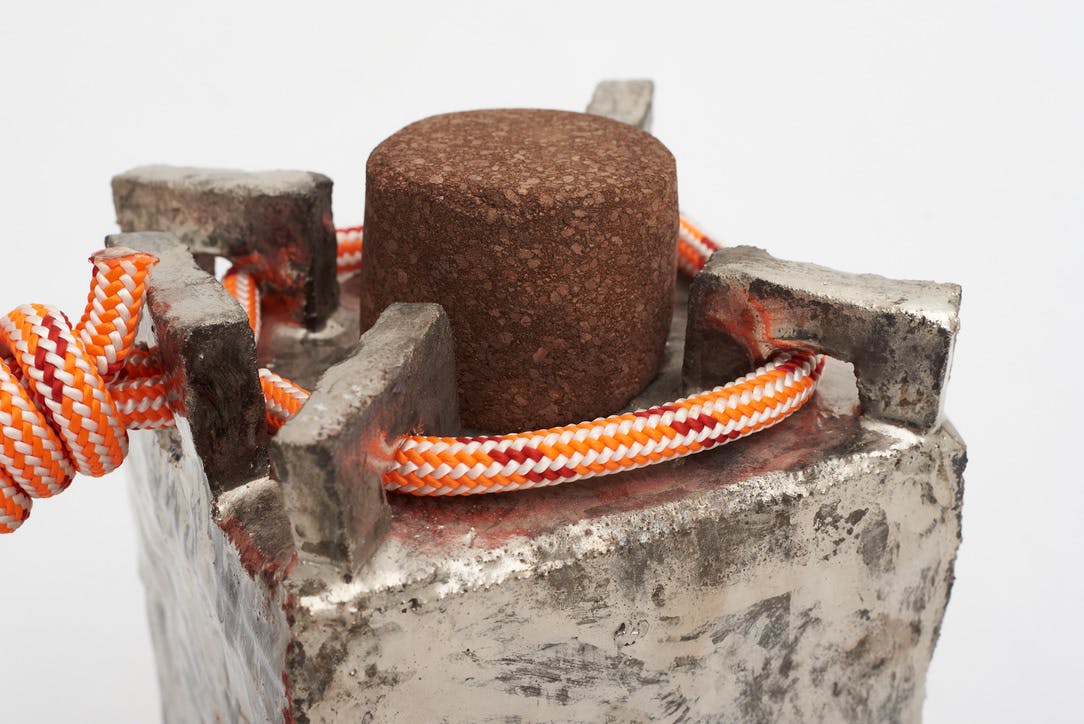
Kristen_ Tell me about you and how you got started.
Karl_ I’m from Copenhagen. Growing up, I knew I wanted to be a photographer, so after graduating, I worked as an assistant for a few Danish photographers and the painter Tal R. He’s such an interesting, intricate, and mysterious person. I worked for him for three years doing sculptures, collages and painting. He has a really good way of talking about what he does, and he's still an idol for me.
So, did you help with the craft part, too?
He would set up the perimeters for what we could do, and then we would execute it within that framework. He would prepare a lot of work, and then we would glue it or cut it. He was always one step ahead of us. It’s the most progressive foundation for an artist to have this insight into another person's work. And I didn't know in the end what was me and what was him because I was just doing what he said. I think that I adopted that in many ways, I was like a sponge.
Then, I left to study art at the Rietveld Academie in Amsterdam to explore other mediums. It was a monumental year for me to just let go of anything I knew. All my comfort zones were deleted.
What are some of the things that you dabbled in that have later snuck into your work, so to speak?
I think it's so healthy for any artist not to know where you’re going; there's no right or wrong. It's just so immediate. That's also what we were doing for Tal R with untrained people around him working as his hands. I think he wanted that fresh look, a new entrance, and to do something that he wouldn't do, and then he could say, ’Let's take that and do it in a good way’, in many ways riding on our faults. And I think that's what I’m also trying to do.
As soon as I get too comfortable with something, I get bored or just want to move on and do something completely different. I try to stay naive about the craftsmanship, you want to continuously surprise yourself and your audience.
What does that process look like for you when you pivot?
I think you search until you feel there's something, and then you want to nail it. For example, when I was in Berlin, I was looking to try something new. I ended up in this ceramic studio, which gave me an entry into doing just that.
I'm the same. I'm slow to change. I can get bored and get the urge to change, but something has to happen where I'm forced to, but once you do, it's the best.
I feel that. Every time I moved somewhere or did a residency or, by coincidence, ended up in a different place, it gave me the opportunity to be someone else and do something different. And that can happen in many ways.
I moved to London with my girlfriend. Initially, she wanted to move to Amsterdam, but I thought the canals, the bikes, the city's size, and the mentality were very much like Copenhagen. And I wanted to just find something bigger that I wouldn't get easily bored of and London was unknown to me. But it took me a long time to get used to it; it was tough and a bit cold. And you feel like an outsider until you realise that everybody is. It is one of the most international cities I've been to. Once you crack the code, you realise the whole world is represented here, and you can claim it to be yours as much as anybody else.
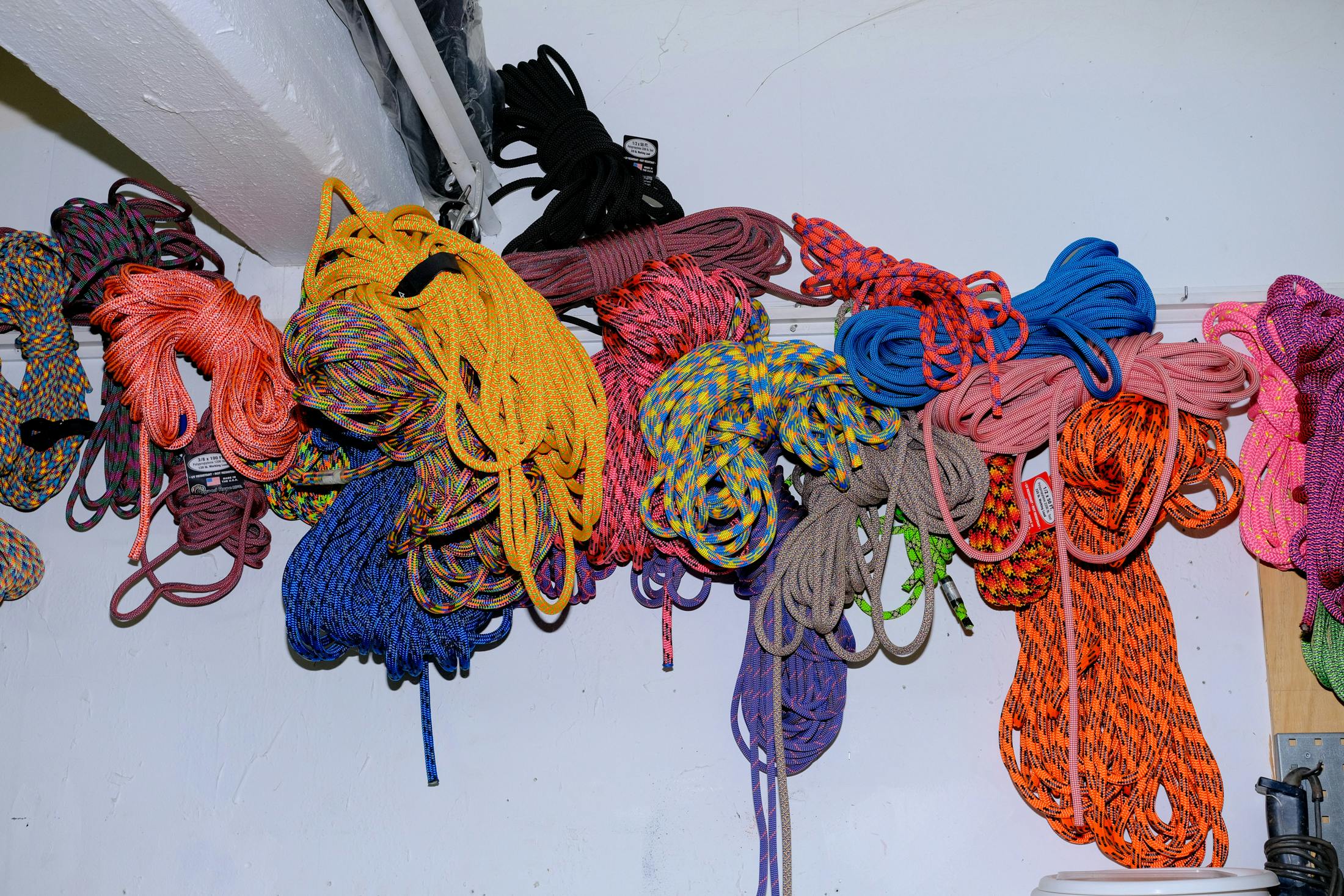
Like New York. Who's a New Yorker?
But New York is a bit tougher, like the communication is tougher. There's not this gentleness you see in the UK, ‘Hi love, what can I do for you?’.They’re so polite to the extreme. I think also London has been used to dealing with different cultures for generations on a much deeper level. Most people in the world go to London to study or to live. I miss London a lot. It was such a nice place because everything was represented. Also, art-wise, you could go to see twenty shows in a day.
I agree. It feels like no matter what it is—music, theatre, art, or design—things are constantly evolving there.
Also, regarding universities, I think there’s such a rich history with, for example, Goldsmiths and St Martins. I was, in a way, very lucky to get into Slade because it’s an art school and nothing else with only 120 students.
Does that mean that everyone can do their own thing?
Yeah, completely. It was tough to get in. Many Slade alumni went on to be successful. When you look at all the great British art, a lot of it comes from Slade, not that I put myself in that category. I think they pay a lot of attention to each student compared to a lot of my friends who tell me, ‘I see my tutor only once a month’.
And did you feel they taught you to think differently?
Yes, especially critical awareness. A lot of talks, and visiting lecturers, you can sign up for tutoring and many former professors come by too. But also there's a different contract between the student and the teacher since you pay a lot of money and they cannot tell you, “Don't be an artist, you don't have what it takes”. They have to help you…
But having an art school is a very contradictory thing. The school cannot teach you how to think; it can only set up the right circumstances and the right environment for you to learn what you want to learn. You can get some feedback, but you can get that anywhere. So, it's nice to have a platform where you can be creative, see fellow students, and be curious. I think my most precious memories were these critical classes where five students would put up their work, and everybody could comment on the references, the flaws and the good things...it was a slaughterhouse, but in a good way.
That was one of my favourite things at art school. It also helps you get a thick skin and not take things too personally. It's just someone's opinion or idea.
That's the balance. You want to showcase yourself and be vulnerable because otherwise, it's just an act. While the school was small, you can still get a sense of the real world at play. It's the real city, and we were trying things out all the time and exhibiting in galleries.
Vulnerability is necessary to creating honest work, and it is one of the hardest things to do – to put yourself out there in a raw way. Would you consider yourself a designer? Were your parents creative?
I don't know much about design. My grandfather was a bricklayer before becoming an architect. He did these very modernistic, minimalistic, functional buildings. My father and mother were all about aesthetics but not so much the functional aspect of things. It kind of skipped a generation since I'm going back to the honest, clean, brutal side of things, just showing them as they are, not hiding anything. There’s a whole generation of people who are all about the aesthetics, the look of it and the exterior.
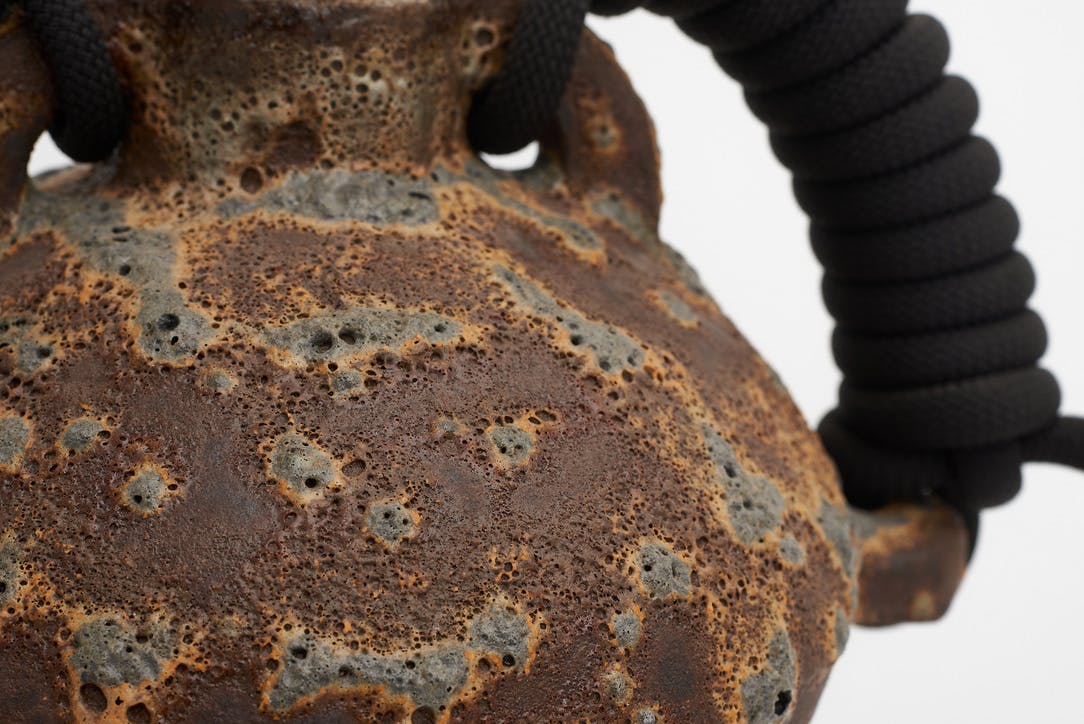
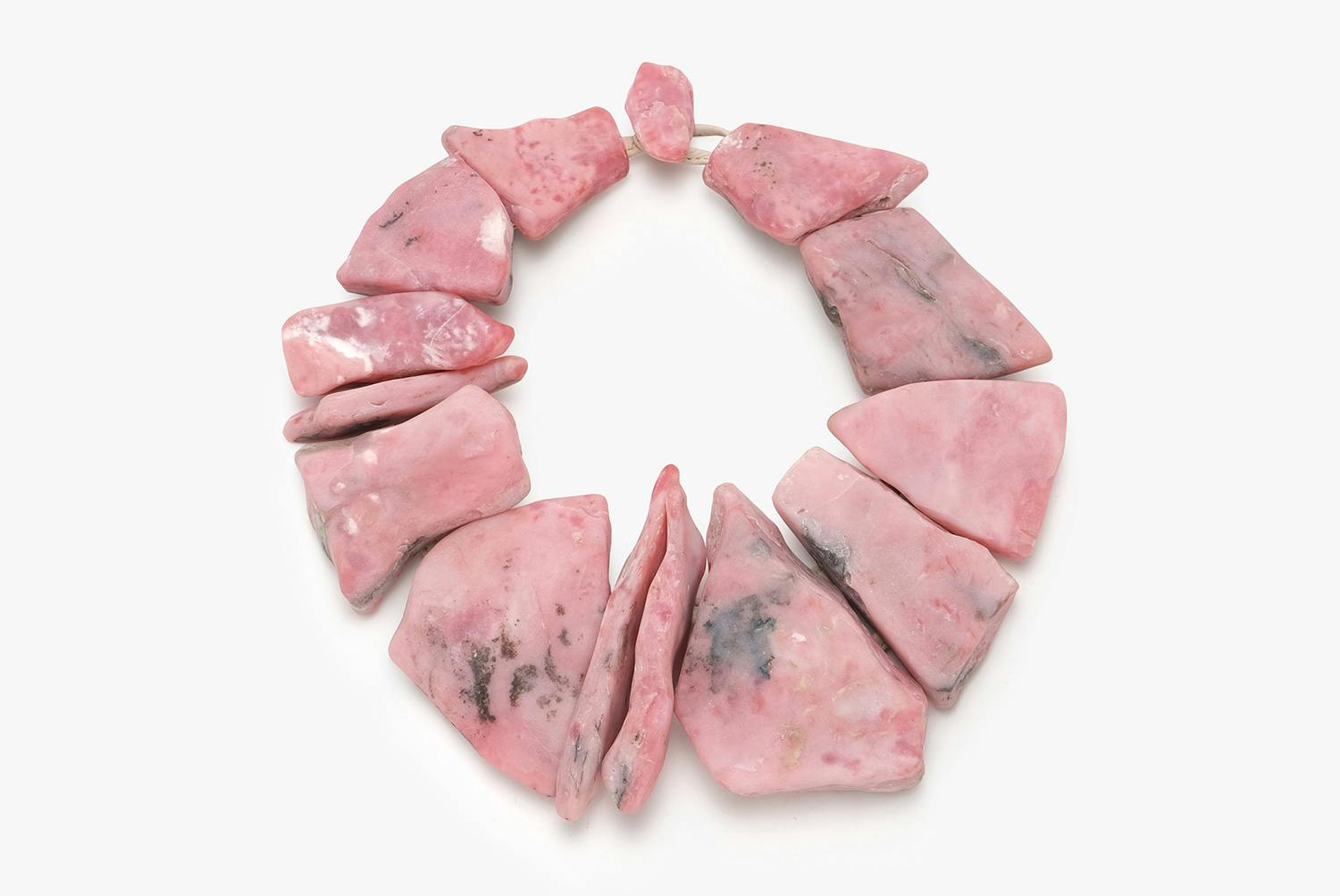


What happened after Slade?
When I finished Slade, I continued to live in London and went to my studio every day. But I also worked as a tech for galleries and museums. It was a nice experience to be behind the scenes and work with many different artists. And I got a sense of the business, you meet gallerists, and you would talk to them about all this stuff.
Then I went on a design trip with my mum, and we ended up making jewellery. One of the things that I did on that trip ended up on Beyoncé in a video. It was in the Monies kind of style. But I think what Monies stands for is unique in the jewellery business because we don't work as traditional goldsmiths; we use all kinds of materials, natural materials such as acacia wood and acrylic, as well as horn and bone and stone.
I thought, okay, this is something that I know I can do intuitively, something I grew up with. I understand the aesthetics of the brand because this is something that my family has been working with for 50 years.
Monies’ collections are standing on two legs. Our biannual collection, made of wood, horn, bone, recycled acrylic, and stones, is produced in limited numbers. Then there are our unique One-of-A-Kind pieces, all designed, produced, and assembled here in Copenhagen.
When I returned home to Copenhagen, it felt like a different city in many ways. I felt at home in a new way. This is where I told myself this has potential, being a part of this brand and carrying on the legacy. I think it has a lot of potential because we are unique. We’ve never promoted ourselves or did any advertising. My parents just did a lot of groundwork. We sell to shops, but you also have many private customers all over the world.
And so, how did people find out about Monies?
By being in the right shops all over the world for a long enough time. It's a very old-school business, in a nice way. It's never been like a big business, but I think we also don’t emphasise the value of uniqueness enough. You’re buying a piece that’s not designed to be made in hundreds of thousands; it's either a unique piece or in small editions. And this is something that I think is very valuable today.
I’ve passed by the shop in Palais Royal (Paris) and seen a bit online and it feels that the pieces are more like functional art. It is a form of jewellery that has the qualities of an art piece.
It speaks to very few individuals; the aesthetics would need to match a certain style. I see jewellery as something with lots of different functions depending on the carrier.
I think it happened simultaneously for me to go from painting to making objects that you can activate. I ended up taking care of the business and keeping the legacy alive while also trying to make it my own rather than just copying what my parents were doing. I wanted to boil it down and make it more precise, to take what I think is the most valuable and beautiful part of it and try to systemise it in a way that makes the aesthetic range feel a bit closer and personal.
Indeed, I felt I couldn't tell what the aesthetic was. But I didn’t have all of the backstory about how you were exploring and experimenting with materials. But that can be hard from a business point of view, no?
I'm more of the business person, understanding what's our identity. Many big design companies, whether it’s in jewellery, clothing or other objects, have one or maybe three design directions that they just push. They have one designer and then ten salesmen. At Monies, it’s the other way around; we have one sales rep and 13 people in the workshop. I'm proud of carrying on that legacy from the heart of Copenhagen, making stuff by hand and selling it to fewer individuals all over the world, without worrying about how much we could actually sell. In many ways, the future might be to produce quality stuff for the mass market, but you also want to produce good stuff very well.
I'm also very proud of our eternal free repair policy, if something breaks you can fix it for free, whether it’s your children or your grandchildren. It’s something that I think is needed and carries a great symbol today.

Tapping into how to be sustainable. How should you continue to create it? 2024 we don't always need new stuff. But I do think we do need ways of expression, and you can do that by buying something to keep for a long time, caring for it and fixing it rather than following the disposable trends. I feel that with Monies, you're investing in a piece that reflects who you are because there are many different things available. When somebody finds a piece they like, they feel that it’s them; it’s made for them. I believe in having a special relationship with certain objects that you feel represent or reflect some part of you.
Totally. That's what art is. A lot of times, people walk into a shop and they think, oh, that's the one. It's one out of maybe 50, 100 different things, but it's the one that was made for that trip or that destiny.
That's one of the things that draws me to your work in my mind, that psychology, finding which piece is me. I love seeing all your pieces together and looking at which one resonates with how I feel. And that's also something beautiful, that somebody you don't know could create something that you connect with.
I do things very intuitively, I have a vague idea that ends up becoming this little character, this little personality figure. It’s completely unique because once you make the shape, that's one step and then you do the glazing, you put on the rope and all these steps fine-tune it in a way.
Do you ever know before, or do you do it as you go?
I do it as I go.
I love that.
And I think that they're all experiments; I might try out a different way of making the rope. I can put the loop in the wrong way; then it ends up being different. I never try to copy a glaze that I did before. I always add something else to see what it does. Because the glazes are in a world of their own, you could spend like ten lives understanding glaze.

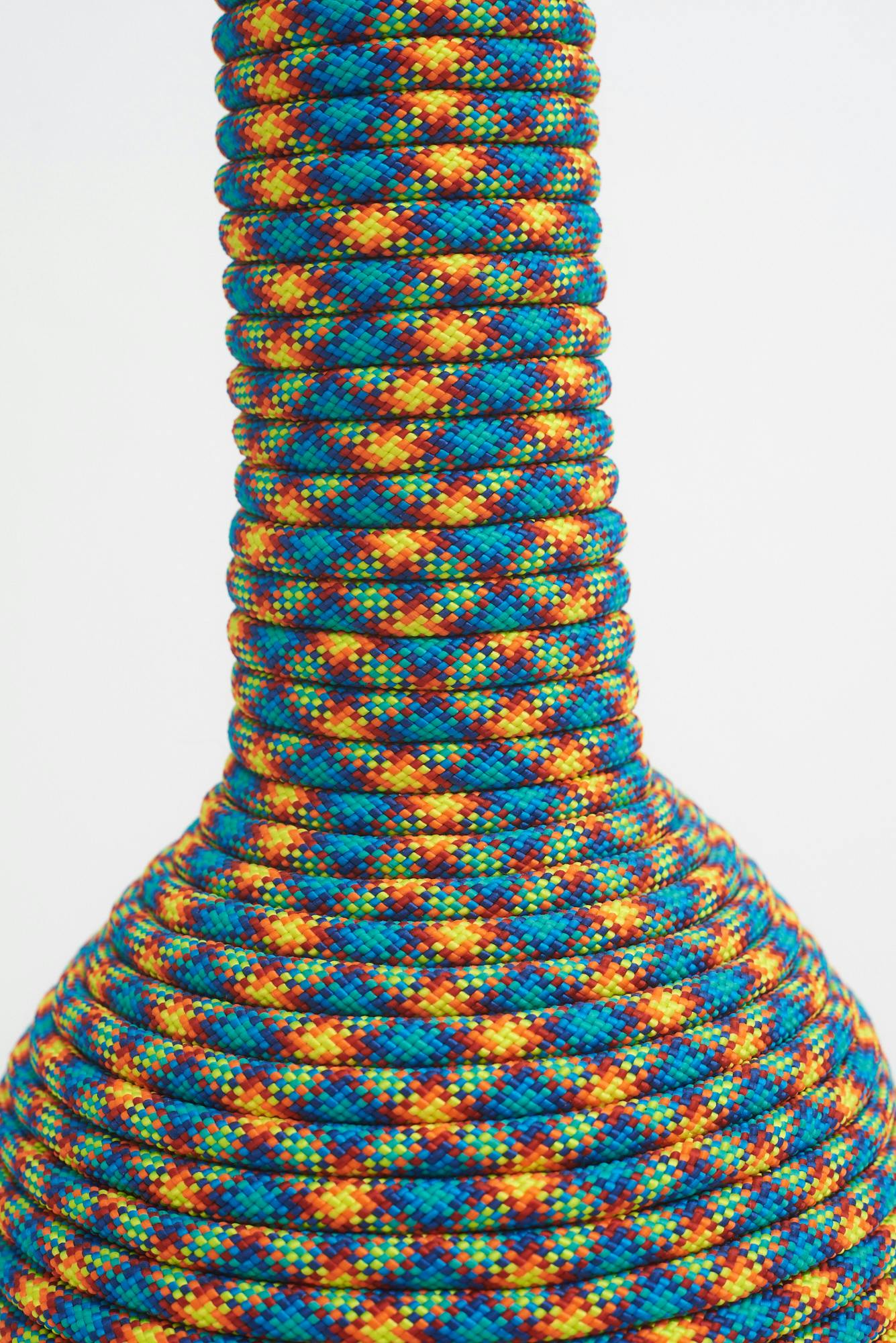
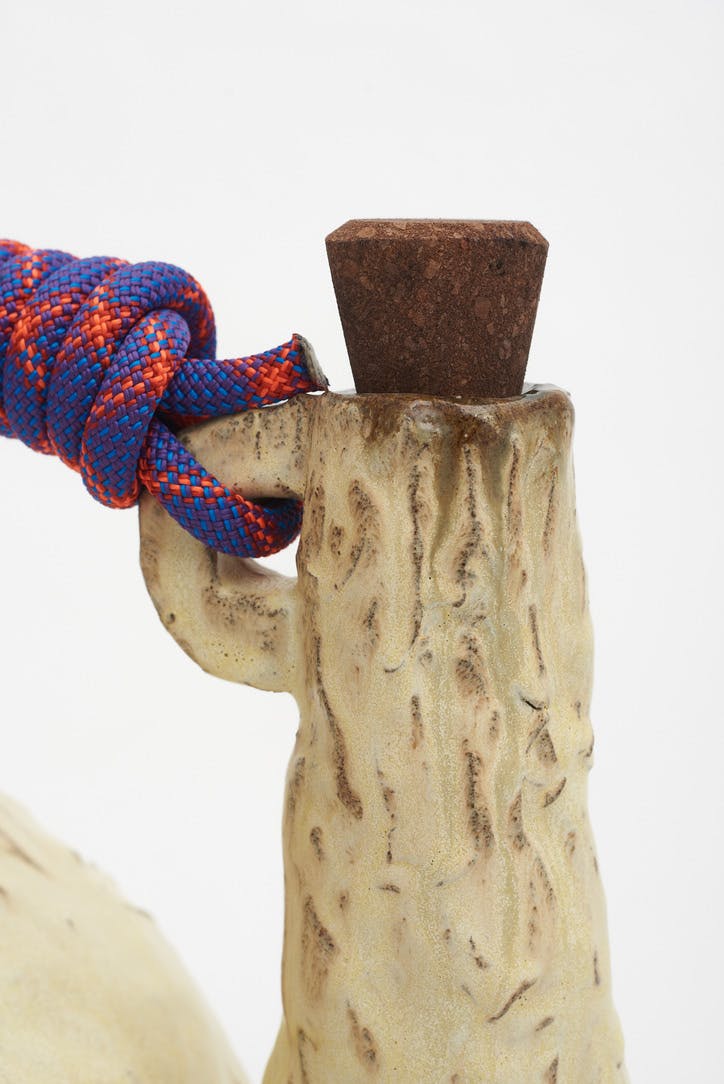
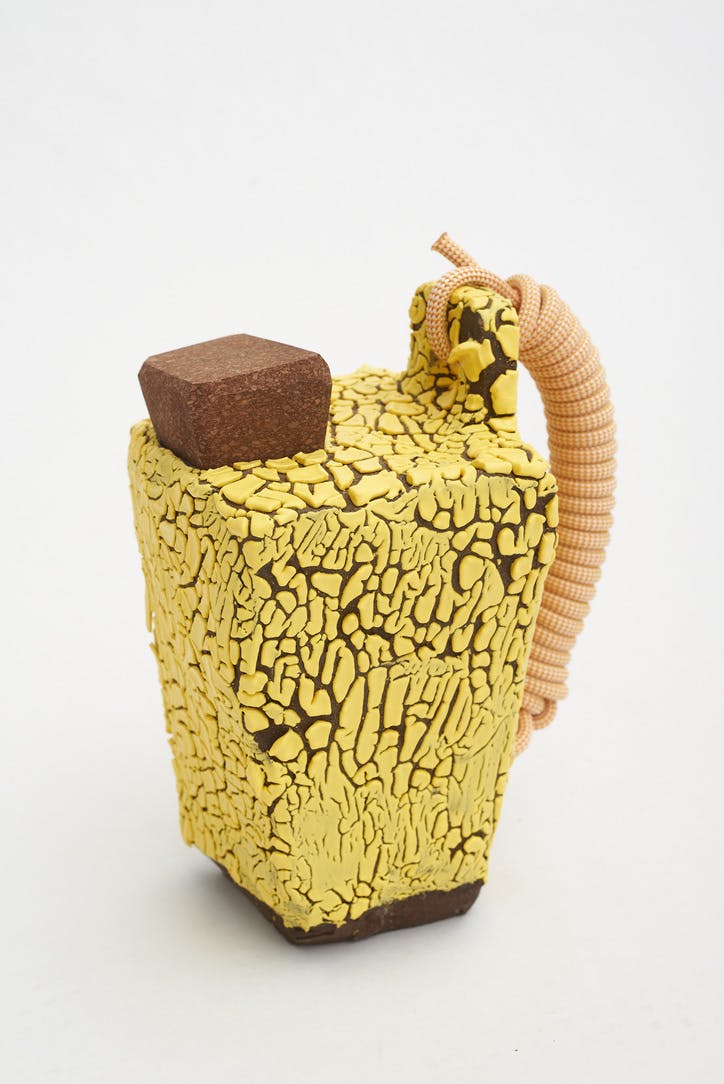
I wanted to ask you about these pieces because the last time you told me this story about your girlfriend when she was pregnant with your first child…
Yes, when I ended up in this ceramic studio in Berlin. I wanted to do something very, omnipresent, something very much the norm for everyone on the planet. Something that can carry a substance or contain something, like a vessel, a flask or a bottle but obviously, it was representing her as a container for our future project in many ways.
For me, the rope design represents sustaining life, like a climbing rope. So you hold up your body and your life with it, but it's also a utilitarian object. You lift stuff with it but can also hang yourself with it. In many ways, the various materials I use have these contrasts in my mind: take something as ancient as clay that anybody can use and pull it out of the ground. Any culture at any point took some earth, burned it and made something permanent. This is just archaic; the first artwork you find is made of burned clay ceramics. So it’s a great contrast with the high-tech, futuristic ropes, and that makes it timeless. It's like trying to find the threshold of how far you can go in the future and the past and putting that contrast into one object. This is something I really enjoy.
But also like you said, those climbing ropes, some of them are neon and bright, more futuristic to juxtapose against this more ancient technology that everyone shares. But it’s still a rope, which we also had in ancient times and has always been needed for many different purposes, sustaining life or ending it, or just to build. And that adds a certain depth. It's not just about adding a pretty detail. Somebody from a thousand years ago could relate to it as well. They wouldn't understand the colours, maybe…
Definitely. In the beginning, these designs were very naive and sloppy, but in a nice way. They were also a bit silly and oversized. I remember having this feeling when I did them in the beginning, thinking that one day, these could represent anyone at any time.

